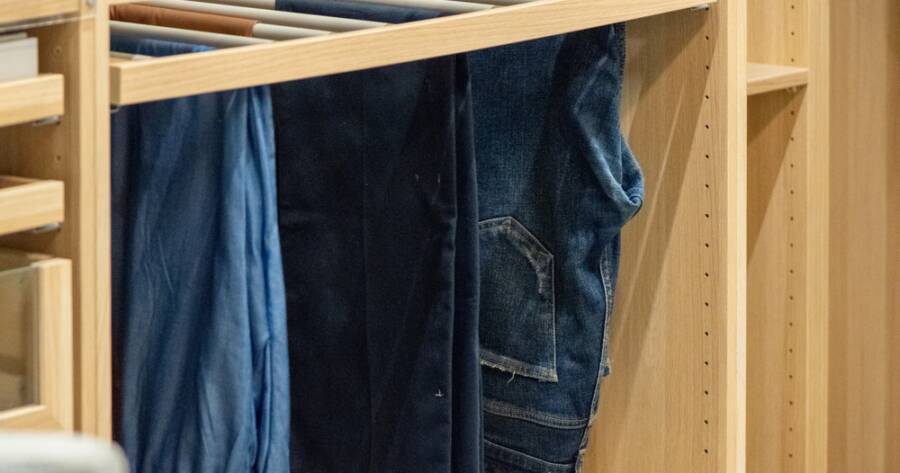Cluttered closets can quickly become a source of daily frustration. Whether you’re in a small apartment or a spacious home, maximizing storage without adding bulk is key to a functional, stress-free wardrobe. Minimalist closet systems offer a clean, organized way to manage your clothing while keeping your space visually calm. Minimalist closet systems focus on simplicity, accessibility, and smart design. With the right setup, you can turn even the smallest closet into an efficient, beautiful part of your daily routine.
The Principles Behind Minimalist Closet Design
A minimalist closet is about more than just fewer clothes — it’s about creating a system that supports intentional living. These systems are designed to reduce decision fatigue, highlight your favorite pieces, and eliminate the stress of clutter. The goal is to keep what you wear, love, and use — and organize it in a way that’s easy to maintain.
Minimalist closet systems often follow a few core ideas: clear visibility, streamlined storage, and flexibility. When everything has a place, and that place makes sense, getting dressed becomes faster and more enjoyable. That doesn’t mean you need to throw everything out — but it does mean editing your wardrobe and storing it with care.
Whether you’re working with a reach-in closet, a walk-in, or an open clothing rack, the minimalist approach focuses on function over excess.
Modular Systems That Adapt to Your Needs
One of the best things about minimalist closet systems is how customizable they can be. Modular designs — which let you mix and match shelves, rods, drawers, and bins — are especially helpful in maximizing space without crowding it.
These systems often use vertical space efficiently by incorporating multi-tier hanging rods, adjustable shelving, and overhead compartments. Instead of bulky dressers, consider a set of pull-out drawers or bins beneath your hanging clothes. You can stack items without hiding them, keeping everything visible and within reach.
If your closet is shared, modular layouts help divide space fairly and clearly. You can assign zones for each person and adjust over time if your storage needs change. Some systems even offer tool-free installation or freestanding designs, perfect for renters or temporary setups.
Look for components that match your lifestyle — not just your closet measurements. Do you fold or hang most items? Do you need space for accessories, shoes, or bags? Modular designs let you answer those questions as you build your system.
Slim Storage for Shoes, Accessories, and Extras
Shoes, bags, and accessories are often the biggest sources of closet clutter. A minimalist closet system addresses these items without sacrificing space. Instead of oversized shoe racks or bins, look for narrow pull-out drawers, vertical shoe towers, or hanging organizers that make use of unused door or wall space.
Over-the-door hooks and clear pouches are also effective for storing scarves, belts, and jewelry in plain sight — and keeping them untangled. If you have deep shelves, consider using bins or labeled boxes to keep smaller items from getting lost.
For bags and purses, a few shelf dividers can keep them upright and easy to grab without tipping over. Some minimalist systems include built-in cubbies or adjustable shelf height, so you can create the exact amount of room you need without wasting vertical space.
The key is to avoid piles. When items are stacked or hidden, they get forgotten or duplicated. Slim, compartmentalized storage encourages you to keep only what fits — and what you truly use.
Open vs. Closed: Choosing the Right Style for Your Home
Minimalist closet systems come in both open and closed designs. Open systems — where clothing and accessories are on display — can encourage you to keep things tidy and stay aware of what you own. They also make a strong visual statement and can double as room décor, especially with coordinated hangers or a neutral color scheme.
Closed systems, on the other hand, offer a more concealed look. They’re ideal for bedrooms where you want visual calm or need to hide items from view. Sliding doors, minimalist curtains, or clean paneling can keep the space feeling sleek without adding bulk.
If you’re limited on closet space, consider combining both. Use open racks for your most-worn items and a few baskets or drawers to tuck away seasonal or less-used pieces. This hybrid approach keeps your space functional without feeling overexposed or chaotic.
Clear the Clutter, Find the Calm
A minimalist closet system helps you move through your day with less stress and more clarity. By simplifying your layout, choosing adaptable tools, and staying intentional about what you store, your closet becomes more than just storage — it becomes a tool for ease.
Whether you’re overhauling your wardrobe or just looking for better flow, the right minimalist setup supports both your space and your lifestyle. After all, the less time you spend digging through clothes, the more time you have to wear what you love — and live the life you want.

